Extrusion
From 2D to 3D
When ever we modify something in JSCAD, not matter if extrusion or transformation, we pass the shape we want to modify into that command and the command will return the modified version of the shape, which we can then store in a new variable (or the same).
Extruding
const {extrudeRectangular, extrudeLinear, extrudeRotate} = jscad.extrusions;Extrusion is the process of taking a geometry and extending along one dimension.
ExtrudeLinear
Linear extrude allows you to extrude on the z-axis {height: 20}:
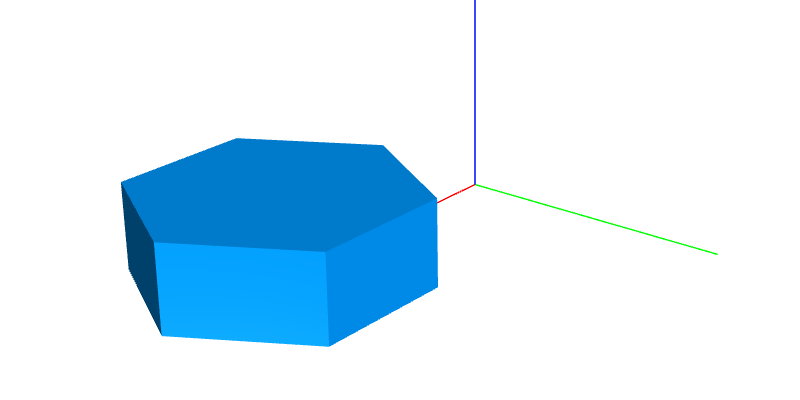
const circleShape = circle({
radius: 5,
segments: 6,
center: [0, 0, 0]
});
const extrudeShape = extrudeLinear({height: 20}, circleShape);You can add a rotation to the extrusion twistAngle and how many steps inbetween should be created twistSteps:
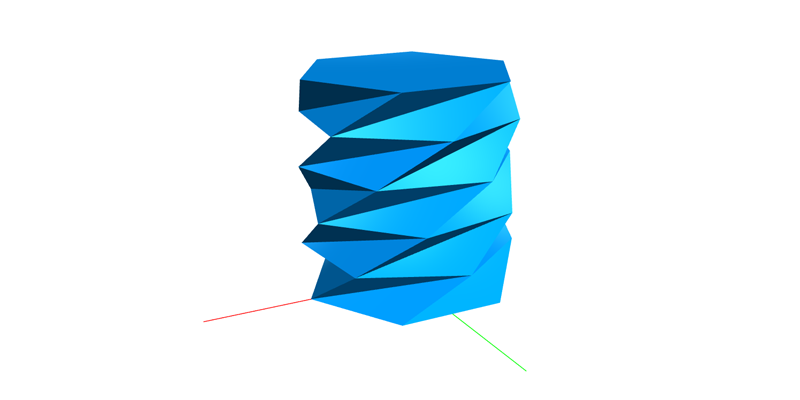
const circleShape = circle({
radius: 5,
segments: 6,
center: [0, 0, 0]
});
const extrudeShape = extrudeLinear({
height: 20,
twistAngle: Math.PI * 2,
twistSteps: 12
}, circleShape);The rotation works along the z-axis relative to [0,0,0]. If an object is not located on [0,0,0], the twist effect from above will look different:

const circleShape = circle({
radius: 5,
segments: 6,
center: [0, 0, 4]
});
const extrudeShape = extrudeLinear({
height: 20,
twistAngle: Math.PI * 2,
twistSteps: 12
}, circleShape);extrudeRectangular
For this extrusion imagine a cube walking along the outline of the shape and, thereby, creating the extrusion. You can define size and heigth of the rectangle and result ing extrusion:
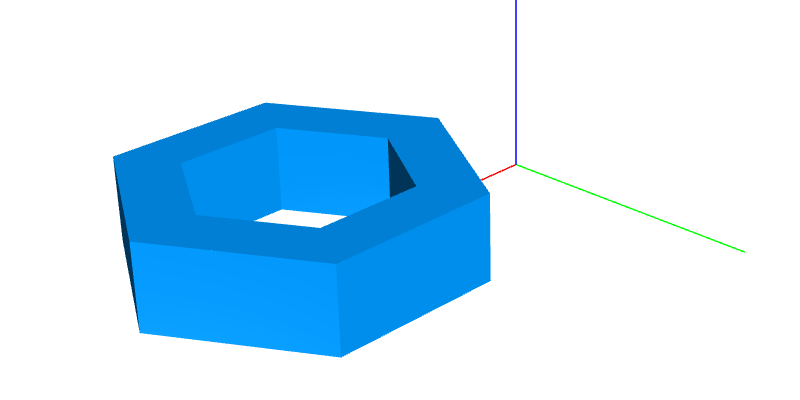
const circleShape = circle({
radius: 5,
segments: 6,
center: [0, 0, 0]
});
const extrudeShape = extrudeRectangular({
size: 1,
height: 1
}, circleShape);extrudeRotate
For this extrusion the shape is rotated around the z-axis, the angles define start and end, segments the amount of steps:
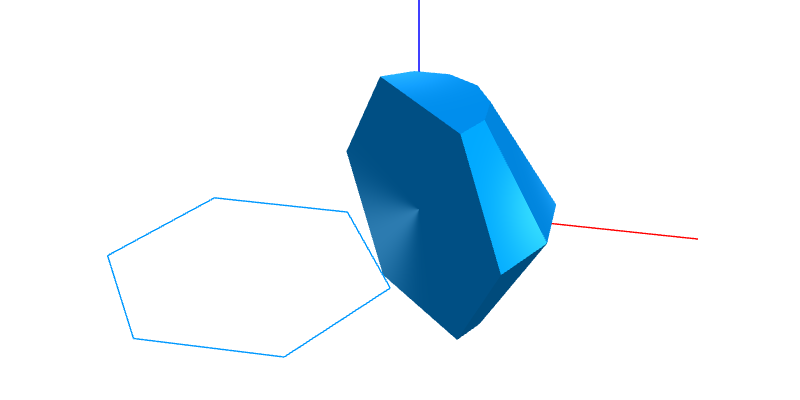
const circleShape = circle({
radius: 5,
segments: 6,
center: [0, 0, 0]
});
const extrudeShape = extrudeRotate({
angle: Math.PI / 180 * parameters.end,
startAngle: Math.PI / 180 * parameters.start,
segments: parameters.segments
}, circleShape);In the above example the shape is located on [0,0,0] and, therefore, rotated around itself. Similar to extrudeLinear, adding an offset, the shape rotates differently:
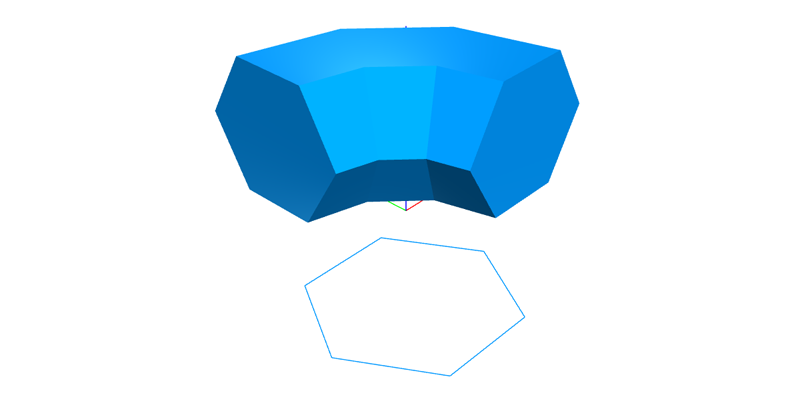
const circleShape = circle({
radius: 5,
segments: 6,
center: [0, 0, 4]
});
const extrudeShape = extrudeRotate({
angle: Math.PI / 180 * parameters.end,
startAngle: Math.PI / 180 * parameters.start,
segments: parameters.segments
}, circleShape);Expand & Offset
const {expand, offset} = jscad.expansions;In the last section we looked at extrusion. Taking a shape and extending it along an axis. Another similar method is expand and offset.
Offset
Offset can be used on 2D shapes. It simply offsets the outline by given delta. A negative delta shrinks the shape. For the corners three different types of offsets can be achieved:

const rectShape = rectangle({size: [50, 25]});
const offsetShape2 = offset({
delta: 10,
corners: 'chamfer'
}, rectShape);
const offsetShape3 = offset({
delta: 20,
corners: 'round',
segments: 20
}, rectShape);
const offsetShape1 = offset({
delta: 30,
corners: 'edge'
}, rectShape);Expand
Expand has the same effect as offset for 3D shapes. It only offers the corner method 'round', but you can define the segments:

const rectShape = cuboid({size: [50, 25, 2]});
const offsetShape1 = expand({
delta: 10,
segments: 4
}, rectShape); Task: Offset extrusions
Explore the various extrusions when you combine them with an offset. Create a grid of extruded objects.
Inspiration: Extruded rectangle with rounded corners
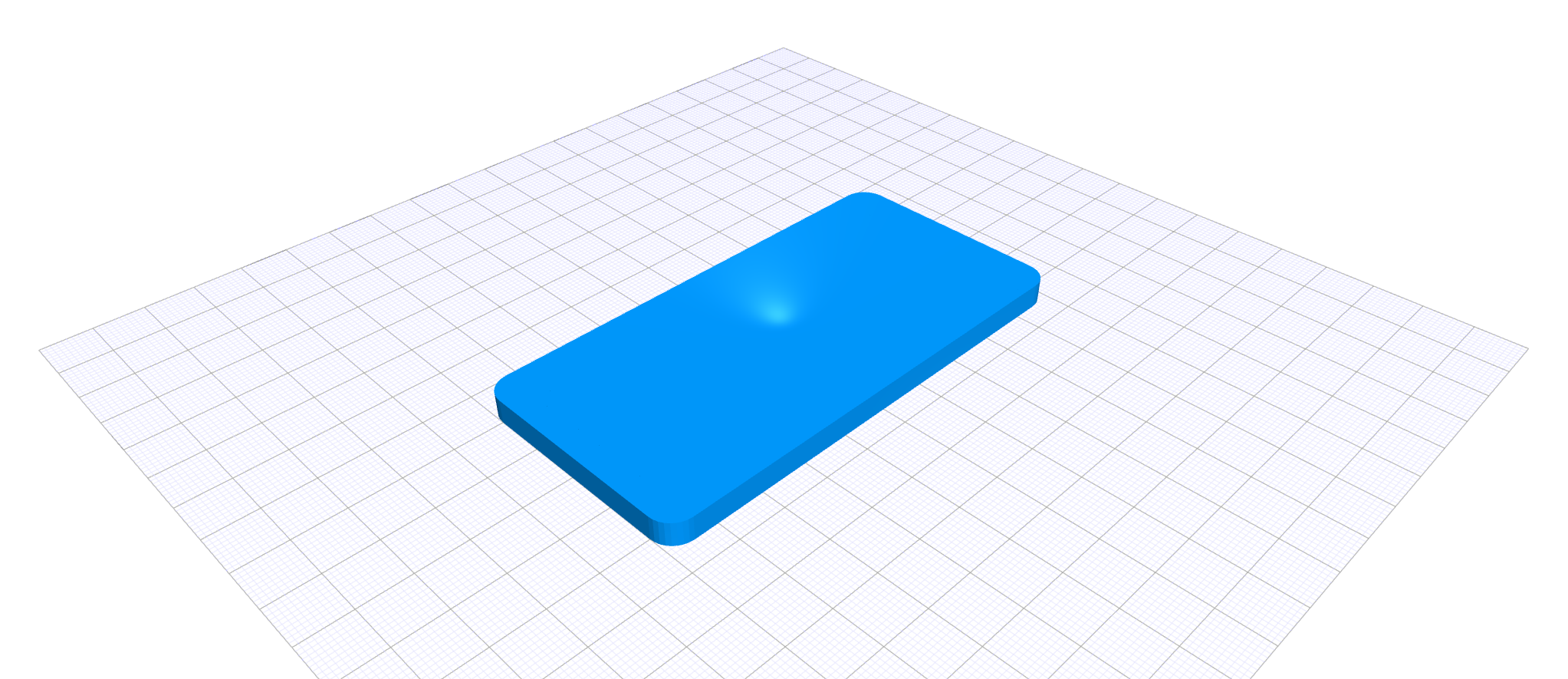
View on GitHub/lectures/3d/extrude

